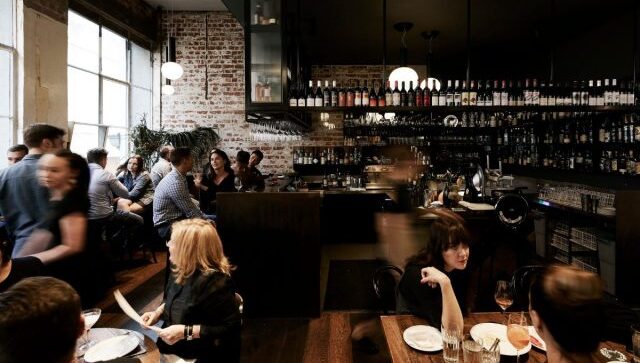Four months ago I wrote about the importance of improving Australia’s labour force participation rate given, with 480,000 vacancies.
Even if Australia’s participation rate rose only one percentage point (to 67.7%) that would still represent an additional 210,000 immediately available workers.
There are one million Australians who want to work but have barriers preventing them from doing so.
For reasons I detail here Australian employers would much rather have more overseas workers arrive in this country to undertake the available work rather than take more responsibility for removing the most common barriers preventing more Australians from entering, or re-entering, the labour market.
From a recent scan of the news, it seems that it’s Australian public sector employers who are most enthusiastically going offshore to find workers.
Victoria Health has billboards, aimed at attracting Irish doctors and nurses, near the Mater Hospital in Dublin.
Western Australia’s police force has launched an international recruitment campaign targeting officers from the United Kingdom, Ireland, and New Zealand.
The WA government wants to attract 950 officers to bolster numbers for the police force that has responsibility for policing 2.5 million square kilometres, the world’s largest non-federated policing territory.
Under the agreement, police officers from the UK and Ireland will be able to move to Western Australia under the employer-nominated scheme, putting them on a pathway toward citizenship.
A key reason (which I failed to recognise in my June blog) for focusing on increasing local labour force participation, rather than bringing in overseas workers, was succinctly pointed out this week by economics journalist, Alan Kohler, – available accommodation.
Almost every local person not currently in the labour market, but wants to be, is already housed in Australia. Accommodation only has to be available for those workers who need to move from their existing residence to be able to commute to their new place of work. Contrast this to the necessity of finding a place to live for almost every new worker who arrives from overseas.
Consider the following facts that Kohler details in his column earlier this week:
- In the five months since the Federal election, the visa backlog has come down from one million to 872,000
- However, 2.22 million visa applications have come in since June 1, more than four times as many as in the same period last year.
- Approvals for student and working holiday visas are back to pre-pandemic levels, about 55,000 a month in total.
- The permanent migration intake has been approved to rise from 160,000 to 195,000.
Compared this frantic level of activity with the reality on the ground in Australia’s cities:
- The total number of places to rent (37,626) is about half of one month’s new arrivals.
- Melbourne has 126,600 job vacancies, 10 times the 12,665 rental vacancies
- In Sydney, it’s 150,800 jobs compared to 14,444 places to rent
- There are 962 jobs on SEEK in Kalgoorlie but only 74 rental vacancies,
- In Cairns, businesses are looking for 1873 workers and there are only 361 places for them to rent.
As Kohler points out:
The government’s efforts to help businesses get staff from overseas are laudable, but if this isn’t combined with an equally serious effort to create more accommodation, we’re heading for a much worse housing crisis than we have now, and that’s saying something.
In the election campaign, Anthony Albanese promised to set up a $10 billion fund that will build 10,000 homes a year.
Meanwhile, it has approved two million visas when there are 51,437 homes currently available to rent.
The Immigration Minister Andrew Giles…….urgently needs to start talking to the Minister for Housing, Julie Collins, or else most of those people will be living in tents.
If the Labor government doesn’t start coordinating immigration and housing, the mixture will be explosive, because Australia’s housing crisis is going to be horrific next year.
Photo by Yoav Aziz on Unsplash
This article originally appeared in Ross Clennett’s blog and has been republished here with permission.
Do you have a TA story to share? The ATC team wants to hear from you.







